Matador Network's Blog, page 881
April 14, 2020
Disney releases Dole Whip recipe

Parts of the United States are officially on their fifth week of quarantine, and there are no signs that travel bans and self-isolation orders are going to let up any time soon. That means your vacation probably got canceled and you haven’t left the house, except for perhaps the occasional trip to the grocery store, in quite some time. Thankfully Disney, which closed its parks in the US in March, is bringing a tropical vacation straight to your kitchen. The theme park of choice for kids and kids at heart has released its famous and wildly popular pineapple Dole Whip recipe to the public, which means you can make it at home, even if you can’t meet Mickey in person this year.
The soft serve dessert, which floats in a cup of pineapple juice, first debuted at Aloha Isle in the Adventureland area of the Magic Kingdom in the 1980s. It’s safe to say it has since become one of the most iconic snacks sold at Disney parks. Luckily, the recipe doesn’t require a sprinkle of Disney magic. It’s simple to make in your own kitchen, and that’s probably an especially appealing prospect for families who had planned a Disney vacation that is now, sadly, on hold.
According to People, all you need to do is blend a scoop of vanilla ice cream, two cups of frozen pineapple chunks, and 4 ounces of pineapple juice (from the can will do just fine). These ingredients are all available at your local grocery store, so whether you’re having your food delivered or braving the store in person, you’ll be able to find everything you need to make this dessert at home. Disney parks might be closed indefinitely, but now you have a sweet frozen treat that will transport your whole family to happier times.
The company recently released its recipe for churro bites, too. Hey, if you can’t enjoy the roller coasters this year, you might as well eat like Disney is in your own backyard. 

More like this: The world’s best restaurant prepares thousands of meals for front-line workers
The post Make Disney’s famous Dole Whip soft serve at home with the official recipe appeared first on Matador Network.

Lego making face visors

In Denmark, protective masks for medical professionals are coming from an unlikely place. Lego, the Denmark-based toymaker, announced on Instagram that it has started manufacturing protective face visors for the country’s healthcare workers. To accomplish this, Lego made modifications to some of its molding machines. Now, instead of making little yellow people, the machines will make visors with wide transparent plastic covers and handles to protect healthcare workers’ eyes, a portal entry for the virus.
View this post on Instagram
A post shared by LEGO (@lego) on Apr 9, 2020 at 7:00am PDT
“This week we began to make visors at our factory in Billund for healthcare workers on the frontline in Denmark,” Lego said. “We are so incredibly proud of the team who made this happen. [The team] worked around the clock to create designs and make molds that can produce more than 13,000 visors a day. We are grateful to have such talented, dedicated and caring colleagues.”
Lego is set to produce 13,000 visors a day for the foreseeable future, which should go a long way toward keeping healthcare workers safe in Denmark’s fight against COVID-19.
View this post on InstagramA post shared by LEGO (@lego) on Mar 30, 2020 at 4:02am PDT
The toy company has contributed in other ways, too. On March 30, 2020, Lego announced a $50 million donation through the Lego Foundation for children in need, including those under pressure from COVID-19. Today, the company announced that it was donating 500,000 Lego sets to children in need of play. 
View this post on Instagram
Australian couple mistakenly fined

If there was any doubt that governments around the world are taking their coronavirus lockdowns seriously, let this story from Australia put those doubts to rest.
Jaz and Garry Mott, a couple living in the state of Victoria in Australia, decided to spend the monotonous quarantine hours by sorting through old travel photos from 2019 and posting them onto Facebook. The pair subsequently received a fine from the government for their nonessential travel and violation of lockdown rules.
On April 5, Mott posted a total of 12 photos of herself and her husband, tagging destinations like Lakes Entrance, which is around two hours from their house in Traralgon. On April 9, a police officer showed up at their door and handed Mott a fine of $1,060 per person for “failure to comply with a direction given to a person in the exercise of a power under an authorization given under section 199.”

Photo: Jaz Mott/Facebook
More specifically, they were fined for their alleged trip to Lakes Entrance. However, after Mott contacted the local media, the fine was revoked by the police.
According to the Victoria Police Department, “This incident has been reviewed and the decision has been made to withdraw the infringement notice. On occasion, errors will be made however that is why a review process exists to ensure instances such as these are identified and rectified.”
Mott told The Independent that the police have forbidden her from posting any more holiday photos on social media and threatened her with an arrest if she continued. 

More like this: In these locked-down cities, animals are taking over the vacant streets
The post Australian couple mistakenly fined $1,000 each for violating lockdown appeared first on Matador Network.

Austria starts to lift lockdown
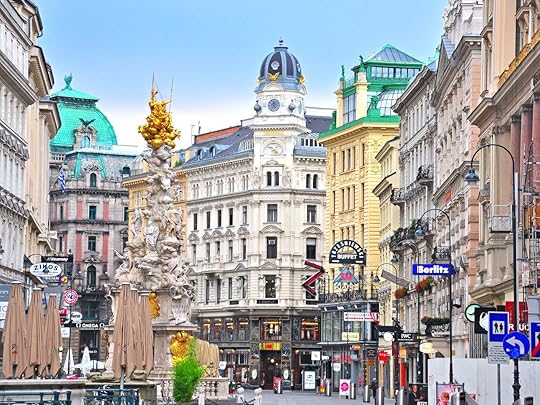
Austria is the first European country to relax its strict coronavirus lockdown measures, reopening small shops, public parks, and DIY and gardening centers on Tuesday after being closed for nearly a month.
The country hopes to gradually go back to normal, while still abiding by strict social distancing measures like wearing masks in supermarkets, on public transportation, and in taxis.
Austria’s quick and decisive handling of the crisis has drawn praise from the rest of Europe, particularly Germany, which is weighing the decision of relaxing its own restrictions.
Indeed, all eyes are on Austria right now, as a bellwether example of how a reopening might look. Currently, Austria will allow shops smaller than 4,300 square feet to open, but only with one customer at a time for every 215 square foot. And shops will only be open between 7:40 AM and 7:00 PM. Violating these rules could result in a fine of up to $4,500.
In addition to small shops and parks, gas station shops, car washes, and bicycle repair shops will also be allowed to open. In May, this will extend to hairdressers and cosmetic salons. Restaurants, however, are not scheduled to open until at least mid-May. 

More like this: The 7 best coffee houses in Vienna
The post Austria is the first European country to ease coronavirus lockdown measures appeared first on Matador Network.

April 13, 2020
Tips for couples during COVID-19

Most of us are still stunned that our new reality involves reading a guide on how to keep a relationship healthy during a pandemic. But as many cities in the world approach a month of shelter-in-place or quarantine restrictions, it’s more necessary than ever. Whether a couple has way too much together time or not enough, COVID-19 has thrown off all of our normal relationship patterns. Old problems can find new ways of presenting themselves. And things we never imagined suddenly need to be sorted.
And yet, this strange time also gives us unique opportunities to grow together and become stronger. Whether you’re a new couple, have a slew of celebrated anniversaries, or haven’t figured out what your label is yet, there are troubleshooting techniques that will help any relationship. Straight from couples therapy, these tangible and research-based tips are a relationship’s equivalent of handwashing — practice frequently.
1. Keep positivity in the relationship
Don’t let distress dominate your relationship. Of course, it is okay to lean on each other. One of the benefits of a healthy relationship is the haven it provides, the comfort it brings. When we’re stressed, we can rely on that acceptance. We know that when our anxious, defensive, shutdown, irritable, or over-functioning selves come out without permission, our partner will roll with it for a while.
But a chronic stressor, like a global pandemic and all of its fallout, means we have to check ourselves. We can’t let our distressed default characteristics take over without giving some positivity back to our partners. While it’s hard at first, this type of cheer doesn’t have to be forced or fake. It builds upon itself, becoming easier and easier for both of you.
Expert tip for all couples: Be mindful and share something you’re grateful for, something that you find funny, or something you felt good about doing that day. These don’t have to be elaborate, or even necessarily about each other. It’s about bringing something uplifting to each other. If you can, aim for relational researcher John Gottman’s 5:1 ratio — five positive interactions for every one negative. Forget toilet paper. You can withstand the stress together if you have a stockpile of pleasantness.
2. Gestures of love and goodwill
During stressful times the simplest thing you can do is to show your partner that you love, respect, and understand them. But sometimes it’s not that easy. The most chronically frustrating thing as a relational therapist is to watch people throw love at each other with heartfelt intention and miss the target completely. We each have different ways that we prefer to give and receive love. Figuring out the different love languages for both you and your partner are key to hitting the mark.
Expert tip for all couples: You’re about to become multilingual in your relationship. Get familiar with Gary Chapman’s five love languages: acts of service, words of affirmation, quality time, physical touch, and gifts. Some people aren’t huggers but give the most thoughtful presents. Others don’t notice the dishes that you want done; they just want to hang out with you. Take the quiz and share what you prefer. Make a point during these lockdown times to make loving gestures towards what your partner most appreciates.
3. Know when to stop stressful conversations
Here’s a truth: When it comes to some problems, there can be such a thing as too much talking. Don’t get me wrong, processing and problem-solving are essential for all of the other tips. But we know from relational research that all couples have “unsolvable problems.” These issues make us learn how to agree to disagree if we’re going to stay together.
We also know that most relationships have a dynamic of “distancer-pursuer.” It’s therapy-speak for when a couple is facing a conflict and one person tends to pull back and shut down while the other chases, pressing to fix it. The more one person pulls back, the more the other pushes and the first person pulls back even more. It’s this pattern that actually causes long-term problems.
Why is this relevant in the coronavirus crisis? When we’re stressed, the stakes seem higher. Our pet peeves and triggers are setting off more. With a lot of together time right now, there are not as many natural breaks from each other. Using all of that time to push and pull at our chronic problems kicks our distancer and pursuer selves into overdrive. It can consume those trying to fix and freeze those trying to avoid conflict. Since our schedules don’t stop us, we have to know how to stop ourselves.
Expert tip for all couples: Gottman calls being stuck in unsolvable problems gridlock, and it helps to think of this dilemma as getting through rush hour traffic. Trying to force a free path won’t work. It requires patience, some planning, and steady action. First, recognize that if you haven’t solved the problem by now, trying to force it in the middle of lockdown is not wise.
Instead, focus on healthy expression. Share your viewpoints, giving each a turn to speak, and validate. Validation does not mean you have to agree with the other person, but that you understand their point of view. We often underestimate the power of simply feeling heard. Look for opportunities for compassion, playfulness, and little compromises. These are your exits out of the gridlock. Then stick to a mutual agreement to let it rest.
4. Giving each other breaks
While true for all couples, this one is especially important for those of you in lockdown together. Remember those early days of dating and infatuation, when you thought of your special person often and wanted to be around them as much as possible? Your hormones provided a steady dose of happy reinforcement, even to the point that you were creating a low-grade hallucinogenic (hello, phenylethylamine). Everything truly did look and feel better. But that’s not sustainable, and neither is “all us, all the time.”
Individual identity is part of healthy relationships. Even the closest couples in the most collectivist cultures have unique roles in a relationship that give them some space. We need time to ourselves and time with others, and that’s okay. It’s important that you still carry on with your interests and allow your partner to do the same, even if it’s in the same space.
Expert tip for couples in lockdown together: Setting successful boundaries is all in the framework. Express the need for space and separation kindly, proactively, and as a relationship strength versus a fail. Remember, these breaks from each other give couples a chance to have separate experiences that they can then share. It also gives us time to connect with others, crucial during this distanced time. It’s not about escaping each other; all of this allows the relationship to keep growing.
5. Creative dating
Every couple needs some novelty. That’s why we go on dates, to break out of our habits and to focus on each other. Sadly, typical dating has taken a massive hit with the coronavirus. The crucial lockdown steps have closed dating venues. Essential workers are exhausted after long hours. Couples that don’t live together have to weigh the difficulty of distance with the risk of getting together. None of this helps us keep things fresh.
But it’s not all bad news. This current reality does give us opportunities to explore new ways to connect and fewer distractions if we choose to focus on each other. Free concerts, tours, apps, games, classes — never before has there been such an available variety of online activities. Now could be the perfect time to explore new interests as a couple.
Expert tip for couples separated during lockdown: Texting just won’t get it done during the pandemic. Whether you’ve known each other for some time or you’re just getting to know each other, voices and faces are necessary to comfort and connect. Get dressed up and have dinner and drinks with a video chat. Watch a movie simultaneously or tour a famous site together virtually. Discover the allure of a phone conversation about nothing that lasts for hours. And feel free to get mutually and virtually frisky. Just be safe in your social distancing, and remember: Some absence does make the heart grow fonder.
Expert tip for couples in lockdown together: Spice up your weekends or non-work days and do something different. That may mean turning off the screens and playing a game or creating something together. It can definitely include sexual intimacy. Think back to the things you did together in your early days of dating that you enjoyed. The key here is prioritizing this dating time. As days flow together and with this sensation of always being available, it’s easy to put each other off and become the wrong kind of distant. Make it a date. 

More like this: Everything you need to know about having sex while social distancing
The post As we approach a month in quarantine, here’s how to protect your relationship appeared first on Matador Network.

Best spring flower bloom locales
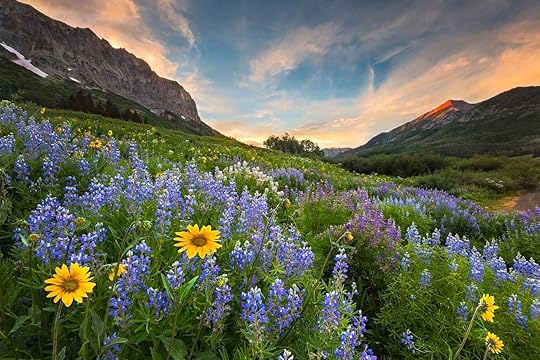
Under normal circumstances, spring conjures images of melting snow, flower fields, and music festivals. In the bizarre and uncertain roller coaster of 2020, spring has mostly brought Zoom conferences, way too much Netflix, and staring longingly out your window. Our outdoor activity might be limited to our respective neighborhoods or, if we’re lucky, a nearby park, but that doesn’t mean nature is canceled. No, you can’t visit the tulip gardens in the Netherlands or the cherry blossoms in Japan this year, but remember — the coronavirus can’t make flowers wither or stop the rain from enriching the soil. Although humans are certainly getting less sunlight these days, perennial spring blooms are right on schedule. From the US to Indonesia, spring is still popping in these places around the world. And if there’s a silver lining to any of this, they’re more untouched by humans than ever.
1. Antelope Valley, California
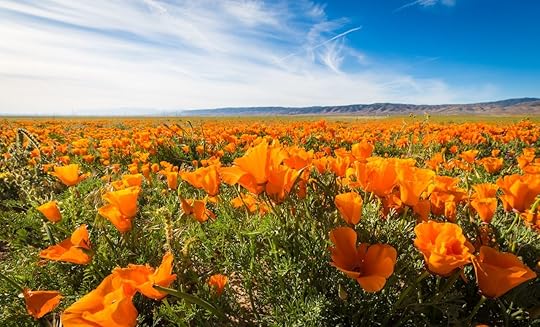
Photo: Sarah Fields Photography/Shutterstock
These days, we don’t need a massive super bloom to appreciate the color in our lives. California’s wildflowers might not be quite as sensational this year, but in this dreary era of lockdowns and social distancing, we’ll take what we can get. About 75 miles north of Los Angeles, you’ll find rolling hills covered in some of the country’s most beautiful poppies. The poppies typically open up around mid-morning and remain open until late afternoon, depending on the weather. The best way to see them is by walking the 0.7-mile trail winding around part of the Poppy Loop. The poppies are clearly the headliner here, but if you’re lucky, you might also spot some California aster, blue lupine, and desert pincushion.
The park remains open even amid the coronavirus crisis, so if you do choose to visit, make sure you distance yourself from other visitors. To enjoy the poppies more remotely, you can always check out the live poppy webcam.
2. Kyoto, Japan
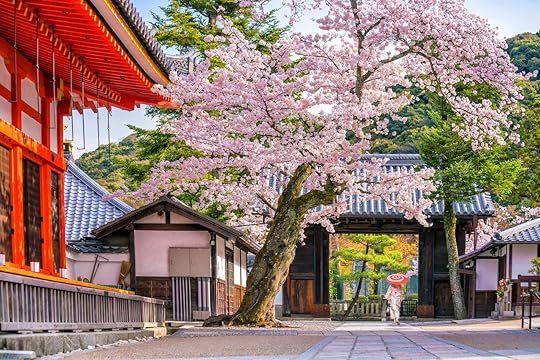
Photo: f11photo/Shutterstock
For many travelers, Japan is synonymous with cherry blossoms. For a few weeks each spring, the famous pink and white flowers bloom in Japan’s cities and across the countryside. And they’re not just popular among tourists. The Japanese even have a word dedicated to the custom of enjoying the beauty of the flowers — hanami. Special hanami parties and picnics are often held in springtime for the purpose of gathering to enjoy the blossoms. Kyoto is one of the best places to see the cherry blossoms en masse, usually starting in mid-March and peaking in the first half of April.
With its hundreds of cherry trees, the Philosopher’s Path between the Ginkaku-Ji and Nazenji Temples is one of the best places in Kyoto for viewing the blossoms. Maruyama-Koen Park is another excellent (and very popular) viewing spot as the blossoms are illuminated from dusk until midnight.
3. Lisse, Netherlands
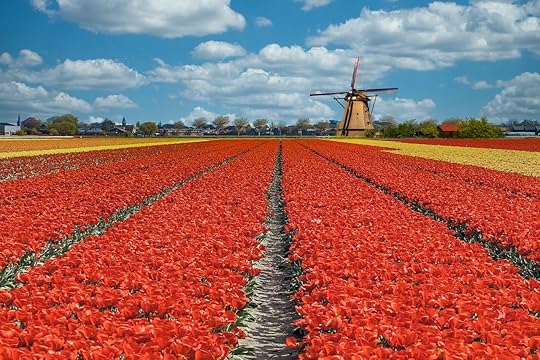
Photo: Ankor Light/Shutterstock
About 35 minutes southwest of Amsterdam, Lisse is considered the epicenter of the Netherlands’ bulb and flower production, exporting its flowers to hundreds of countries around the world. The sandy soil around Lisse makes it particularly conducive for flower growth, and as a result, the fields around the city bloom with color.
The Netherlands isn’t exporting many of its iconic tulips abroad this spring, as public flower festivals and displays are canceled, but that only means the country is keeping all the floral beauty for itself. Keukenhof Gardens, located in Lisse, is the largest flower park in the world with over seven million flower bulbs. Composed of four pavilions and multiple gardens, the park houses a wide collection of tulips, hyacinths, daffodils, orchids, roses, carnations, irises, lilies, and other flowers.
4. Rome, Italy
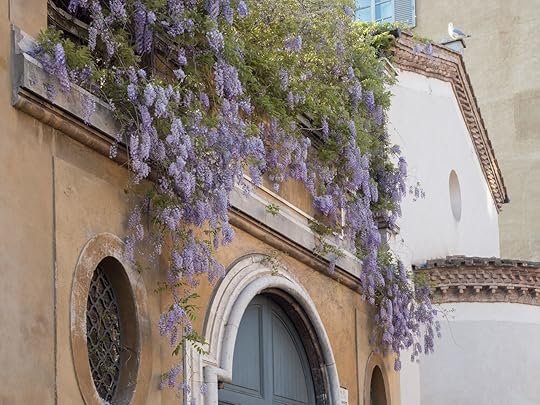
Photo: Chiara Zeni Photography/Shutterstock
April is wisteria season in Rome. Unlike the tulip fields of the Netherlands or the wildflowers in California, you don’t have to venture out of the city to see it. Purple wisteria hangs from rooftops, graces the sides of ancient buildings, and forms canopies over courtyards all around the city. Although the plant is native to China, Japan, and South Korea, it’s become as synonymous with spring in Rome as the cherry blossoms in Japan.
The Villa Celimontana park on the Caelian Hill is one of the best places to see Rome’s wisteria, as well as the Roseto Comunale garden, Via Margutta, and occasionally even the Roman Forum. Since the colors are so striking, you could probably just wander aimlessly around the city without any real risk of missing the blooms.
5. Provence, France
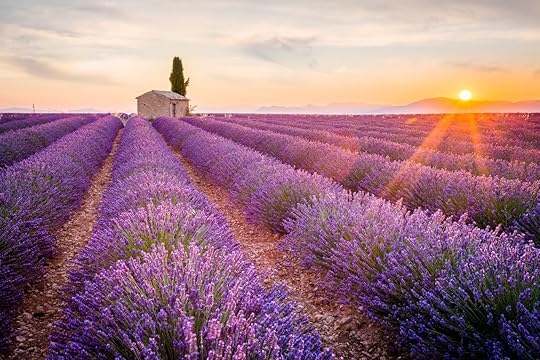
Photo: iacomino FRiMAGES/Shutterstock
Whether it’s because the color isn’t often found in nature, or because it carries a regal air, there’s something special about purple flowers. Provence, a region in southeast France, is home to one of the most stunning collections of purple in the natural world with its abundant fields of lavender. Nothing signals the death of winter more triumphantly than the blooming of lavender in Provence, often as early as May.
There is no shortage of lavender fields in the region, primarily around the village of Valensole. The village’s pastel houses are rivaled only by the colorful flowers in neighborhood gardens, and in the surrounding fields. Saint-Croix-du-Verdon, a village on the other end of the Valensole Plateau, has similarly striking fields overlooking the Lake of Sainte-Croix.
6. Crested Butte, Colorado
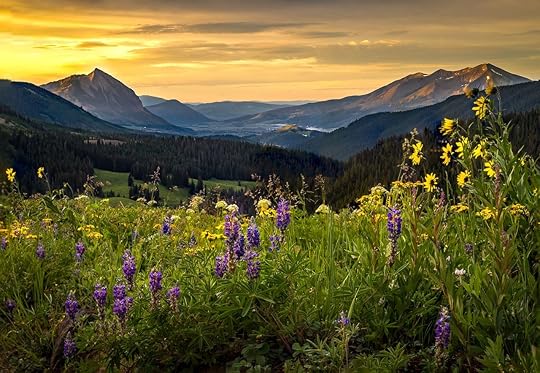
Photo: Hale Kell/Shutterstock
People handle winter in Colorado a lot better than they do in the rest of the country. That’s partly thanks to the ski resorts and partly because Coloradoans seem to have an inhuman tolerance for the cold. But even Colorado natives look forward to the coming of spring because the state sees some of the best wildflower blooms in the country once the weather warms up.
Crested Butte, about four hours southwest of Denver in the West Elk mountains, is home to some of the most colorful flower displays you could hope for. In the spring and summer, the town of just under 2,000 residents is bustling with visitors eager for a glimpse of the pink, gold, and orange wildflowers (and later in the summer, sunflowers). Officially titled the “Wildflower Capital of Colorado,” it’s no surprise there are several wildflower trails through the nearby hillsides, offering views of purple fringe, elephantella, blue columbine, sneezeweed, and alpine sunflowers.
7. Bali, Indonesia
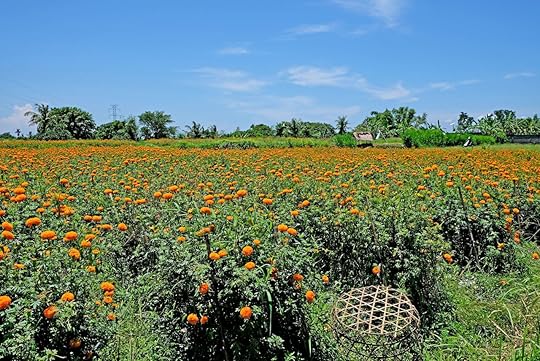
Photo: MagSpace/Shutterstock
Bali is famous as a destination for digital nomads and Instagram influencers, but the island’s flowers often take a backseat to its beaches and rice fields. This is unfortunate because Bali is home to some of Asia’s most beautiful marigold fields. Known as taman gemitir by locals, marigolds figure prominently in religious rituals at temples and festivals, making the Petang Marigold Field an incredibly important site.
The marigold field is located just outside Petang village, along the route between Kintamani and Bedugul. Since farmers usually harvest the flowers at the beginning of each month, it’s best to visit in the middle of the month. In addition to the flowers themselves, the field is located along a mountainous road, so you’ll also be treated to some incredible views of the surrounding countryside. 

More like this: The 11 most stunning flower fields in the US
The post 7 places around the world that bloom to life in spring appeared first on Matador Network.

Best podcasts for travelers

It’s tough adjusting to the era of social distancing and self-isolation. Simple pleasures — such as grabbing a coffee with a friend — are faraway realities, and the idea of hopping on a train or plane is entirely improbable. Although it isn’t possible to physically embark on adventures right now, you can still mentally escape the confines of your home by listening to the right podcasts. Here’s a round-up of some of our favorite travel-oriented podcast episodes, so you can drift off from the current situation by just plugging in your headphones.
1. Tourist Podcast — “Jen Brister – Alan Turing Memorial / Frankie’s Toastie Bar”

Photo: Tourist Podcast/Facebook
Tourist Podcast is a show wherein host Vic Elizabeth Turnball chats with comedians about various tourist attractions in the United Kingdom. In this episode, Jen Brister (British standup comic, writer, and podcaster) walks with Vic through Manchester. They first stop at a restaurant called Frankie’s Toastie Bar, which offers anything you can imagine between two slices of bread. Then they visit the LGBTQ+ district to see the Alan Turing Memorial, which pays homage to the gay British mathematician who cracked the German Enigma code during WWII. The conversation between Vic and Jen fluctuates between playful and serious — while listening, you feel like you’re joining two friends for a casual stroll in the city.
You can listen to the episode on Stitcher, Apple Podcasts, or SimpleCast.
2. Reset — “The Airbnb Scam”
This episode of Vox’s Reset podcast is a must-listen for anyone who travels using Airbnb. Allie Conti, a freelance reporter, uncovered a large Airbnb scam after attempting to rent an apartment in Chicago. Just before Allie was ready to check into her Chicago apartment, the host called her and told her the apartment was flooded. He offered another apartment for her stay, and she agreed, frazzled in a new city and trusting her host. Allie arrived at the new property and discovered that it was dirty, dingy, and run down. But by then, it was too late. The scam takes advantage of the fact that travelers cannot request a full refund after checking into a rental. Listen to the full episode to learn how to spot this scam, and what you can do to protect yourself while traveling.
You can listen to the episode on Apple Podcasts, Spotify, or Stitcher.
3. Betty in the Sky with a Suitcase — “175 Eau du Sandwich”

Photo: Betty in the Sky with a Suitcase
If you’ve ever wondered about the secret world of flight attendants, then this is the show for you. Betty in the Sky is a long-running podcast, and each episode contains funny stories told from the eyes of flight attendants. You can pretty much select any episode and be guaranteed a laugh, but this one is particularly hilarious. In “Eau du Sandwich,” flight attendants share stories about playing pranks on newbies, monks, and sumo wrestlers. Betty’s podcast is an especially great choice if you’re in the mood for something light. And trust us, after listening, you’ll never look at a flight attendant the same way again.
You can listen on Betty’s website, Apple Podcasts, or Stitcher.
4. The Jungle Prince — “Chapter 1: The Railway Station”
The Jungle Prince is a special mini-series, composed of three 35-minute chapters, from the New York Times. This podcast follows reporter Ellen Barry as she discovers a fascinating story while working on an assignment in Delhi, India. A local myth in Old Delhi claims that a deposed prince, princess, and queen of the Shiite Muslim royal line lived in a hidden, crumbling palace on the outskirts of Old Delhi. After repeatedly hearing about this legend from locals, Ellen received a call from her office manager with instructions about how to reach the supposed royal family. This gripping tale about Ellen’s investigation will have you listening to all three chapters back-to-back.
You can listen on Stitcher, The NY Times website, Spotify, or Apple Podcasts.
5. She Explores — “Shining A Light On Caving: Katt Greaser”
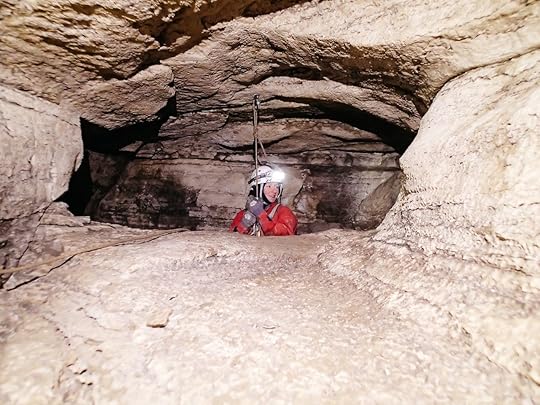
Photo: Brian Gindling via She Explores
She Explores is a podcast hosted by Gale Straub that chronicles stories of women who are passionate about outdoor adventure and travel. In this particular episode, caving enthusiast Katt Greaser discusses how she got into caving, as well as her recent caving trip in the Scapegoat region of Montana. Katt shares audio recordings from inside the Scapegoat caves, as well as insight about cave navigation techniques. Her obvious passion for the sport is contagious. This episode is a great listen for anyone who has ever considered caving, and it’ll certainly provide inspiration for your next trip once the era of social-distancing ends.
You can listen on the podcast site, Apple Podcasts, or Spotify.
6. The Trip — “Episode 21: Beyond War With Yuri Kozyrev”
The Trip is a podcast series by Roads & Kingdoms, the travel publication associated with the late Anthony Bourdain. Nathan Thornburgh is the host of The Trip, and in this episode he sits down with world-renowned conflict photographer Yuri Kozyrev. Yuri spent 25 years covering conflicts from Chechnya, Afghanistan, Iraq, Libya and beyond. This intimate interview covers the personal struggles of being a conflict photographer, and eventually, Yuri’s decision to quit. It’s a must-listen for any traveler interested in travel journalism.
You can listen on Spotify, Luminary, or the Roads & Kingdoms website.
7. Uncanny Japan — “Episode 37: The Ogre App to Discipline Your Child (Oni Kara Denwa)”

Photo: Uncanny Japan/Facebook
Uncanny Japan is a podcast hosted by fiction writer Theresa Matsuura. She was born in the USA but has lived in a small Japanese fishing village for the past 25 years, making her an expert on some unusual aspects of Japanese culture. In Episode 37, Matsuura discusses an eyebrow-raising app that contains animations of oni — Japanese demons — to help parents discipline their children. A parent can “call” a demon to frighten their child into obedience. The app contains a series of demonic animations and pre-recorded messages for different scenarios, such as convincing a child to brush their teeth. Matsuura isn’t certain whether she agrees or disagrees with the concept of the app, but she downloads it and gives listeners an interesting, hilarious tour of all it has to offer.
You can listen to the episode on Stitcher, Apple Podcasts, or Spotify.
8. National Geographic Overheard — “Scuba Diving in a Pyramid”
This fascinating episode of Nat Geo’s Overheard podcast follows Kristen Romey, an underwater archaeologist, as she investigates the 2,300-year-old tomb of a Kushite king that is submerged in rising groundwater. This particular tomb — of pharaoh Nastasen — is located in Sudan in an outcropping of pyramids dedicated to a legion of ancient black pharaohs. Kristen must feel her way through dark water and narrow chambers beneath the pyramid in order to excavate irreplaceable artifacts from the royal tomb. In addition to detailing the excavation, this podcast dives into the little-known history of the Sudanese pharaohs. It’s a gripping, informative listen, well worth the 17-minute play time.
You can listen on Apple Podcasts, the National Geographic website, or Spotify.
9. Travel Tales — “Katei”
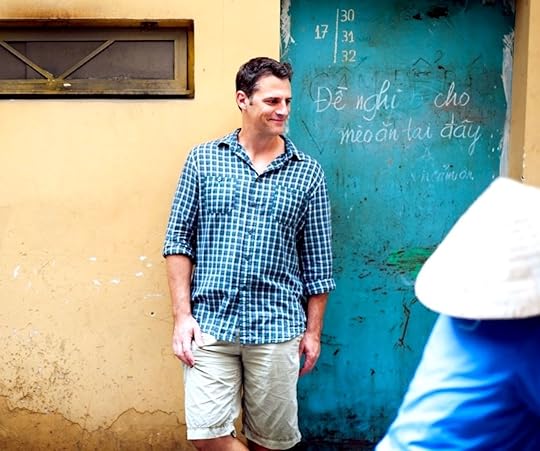
Photo: Travel Tales Podcast/Facebook
Travel Tales is a podcast hosted by American comedian and television host Mike Siegel. In this episode, Mike takes a break from working as a comic on an Alaskan cruise ship to record this interview with fellow performer Katei. Katei is a rock violinist of Korean, Chinese, Taiwanese, and Japanese descent. Mike grew up in Japan, Argentina, and Australia, and lived for several years as a musician in Tokyo. This interview contains stories about growing up Asian in white Australia, surviving the 2011 Tokyo earthquake, and making a living as a busker. It’s an easy listen, and the conversation between Mike and Katei is both good-natured and entertaining.
You can listen on the podcast’s website, Stitcher, Apple Podcasts, or Spotify. 

More like this: Cheerful books that will bring you joy during this isolating, scary time
The post 9 travel podcast episodes to help you mentally escape your home appeared first on Matador Network.

Chernobyl forest fire radiation

Hundreds of firefighters and fire engines, as well as helicopters and airplanes, are battling forest fires near the site of the 1986 Chernobyl nuclear disaster.
Radiation levels in the Chernobyl Exclusion Zone is usually low, but the fires have caused a dramatic increase in radiation.
Over the past 34 years, radiation has been absorbed into the soil and the vegetation, but when a fire breaks out, the radiation is released to the surface by the particles in smoke.
On April 5, 2020, Egor Firsov, head of Ukraine’s ecological inspection service, wrote in a Facebook post, “There is bad news — in the center of the fire, radiation is above normal. As you can see in the video, the readings of the device are 2.3, when the norm is 0.14. But this is only within the area of the fire outbreak.”
The maximum amount of natural background radiation allowed, and considered safe, is 0.5 microsieverts per second, CNN reports. Firsov’s Geiger counter shows an amount five times that number.
It is believed that the fires were started by farmers so as to clear stubbles, which is a common practice in the area in spring and fall.
Kiev, the capital of Ukraine, seems currently safe from heightened radiation level, but wind changes could change the situation. The population of Ukraine is currently under lockdown orders, lessening the chances of inhaling radioactive particles. 

More like this: How to visit Chernobyl safely and legally
The post Wildfires near Chernobyl are causing a spike in radiation levels appeared first on Matador Network.

String-like creature in Indian Ocean

Some of us are more inclined to believe in sea monsters than others, but there’s no denying that what the massive creature that the Schmidt Ocean Institute saw recently is a little creepy.
On Monday, April 6, 2020, the Schmidt Ocean Institute posted a video on Twitter of a thin, silvery organism floating in the open Indian Ocean off the coast of Western Australia. The creature was seen during an expedition in Ningaloo Canyons.
Check out this beautiful *giant* siphonophore Apolemia recorded on #NingalooCanyons expedition. It seems likely that this specimen is the largest ever recorded, and in strange UFO-like feeding posture. Thanks @Caseywdunn for info @wamuseum @GeoscienceAus @CurtinUni @Scripps_Ocean pic.twitter.com/QirkIWDu6S
— Schmidt Ocean (@SchmidtOcean) April 6, 2020
It looks more like a piece of abstract art than marine life, but according to scientists, it’s a giant Apolemia siphonophore.
Logan Mock-Bunting, a spokesperson for the Schmidt Ocean Institute, told Newsweek that the specimen probably measures around 390 feet. If that’s the case, it would be the largest creature of its kind.
Siphonophores are invertebrates, similar to jellyfish, that live in the deep sea. They’re technically large colonies of separate bodies strung together in chains up to 100 feet long. The specimen spotted was hunting, waiting for prey like fish or crustaceans to touch one of its many dangling stinging cells. 

More like this: Where to swim with the world’s most amazing marine wildlife
The post A 390-foot, string-like sea creature was spotted off the coast of Australia appeared first on Matador Network.

Does cannabis show terroir?
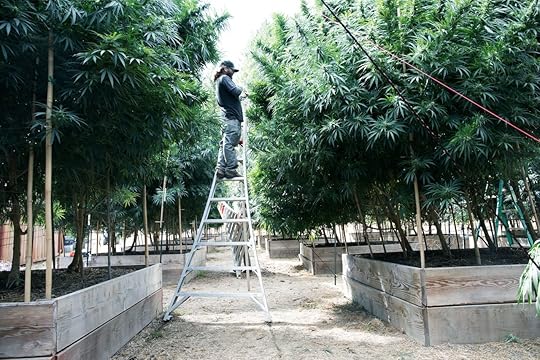
There are 18-foot-tall cannabis trees growing on farms in the mountains of northern California. The stalks are thick and support the bushy leaves that catch the morning dew and soak in the afternoon sun. The plants dig roots into land that’s seen little industry and therefore little ground or air pollution. The cannabis harvested from the plants is deeply aromatic. When you smoke it, says Faun Chapin, co-founder of the northern California based cannabis brand Sonder, you taste and feel something that’s distinct to the Emerald Triangle region of California, which is made up of Mendocino, Humboldt, and Trinity counties.
You can taste, in other words, terroir.
Terroir is a French term that broadly means “of a place.” It comes from terre, or land, and the modern interpretation of terroir stems from its use to describe why the same wine grape tastes different in one region than another. Terroir encompasses everything about the natural environment: the land, the soil, the weather, the microbes, and the totality of plant and animal life. It also includes the human traditions and history that shape a region. Winemakers harness terroir to make a regionally specific product. The same can be said of people in the cannabis industry.
“Like wine, terroir is vitally important to cannabis,” says Neil Bellavia, a procurement specialist at the California-based cannabis company Lowell Herb Co. “Cannabis plants are intelligent and receptive to their environments, cold nights and hot days affect cannabis plants physiology in a similar way to its effect on grapes.”
Today, high-end growers in California are working to have this terroir recognized through appellations structured in a similar way to wine appellations like Napa.
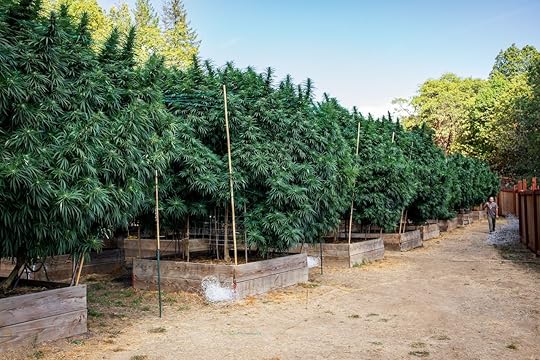
Photo: Sonder
Attention to the nuances of location-specific cannabis has grown as more and more states legalize recreational cannabis. It’s not, however, a new concept. Cannabis originally comes from Central Asia, with documented human use dating back to at least 2727 BCE. It spread around the world through trade over the centuries, and the plant adapted to new environments. Some varieties grew to produce more cannabinoids, while others became rich with aromatic organic compounds called terpenes.
Cannabis, like other plants, can vary wildly from place to place, according to a 2017 paper on cannabis and terroir by researchers from Portland State University. It comes down to genotypes and phenotypes. The genotype, the totality of traits a plant’s DNA is capable of showing, is a set standard. The phenotype, the traits that a plant variety actually shows, is determined by the environment. The latter is what makes regionally specific cannabis.
“It is expected that clones with the same genetics grown by multiple farmers will express different phenotypes because of epigenetic changes that take place as plants adapt to their unique environment,” the abstract reads, which is “the essence of terroir.”
Modern cannabis is broken down into two broad phenotypes: indica, which is associated with sedative effects, and sativa, which is associated with stimulation. These are further divided into what are called “landrace” strains. Landrace cannabis has been growing in a location for so long that each plant is consistent year after year. Strains typically have location-specific names like Hindu Kush and Afghani (from Afghanistan and Pakistan), Kilimanjaro and Durban Poison (from eastern and southern Africa), and Acapulco Gold and Panama Red (from Mexico and Panama).
Today, cultivators primarily grow hybrids of different landrace strains. These hybrids are designed to grow better in certain environments or are bred to maximize certain characteristics, like higher THC or CBD content.
You can think of landrace strains as the equivalent to sauvignon blanc or cabernet franc wine grapes. When humans crossbred the two, they got the hybrid cabernet sauvignon. All three grapes produce different phenotypes depending on where they’re grown. The same is true for landrace and hybrid cannabis.
“Just like with most other crops and plants found on Earth, the climate they grow in has a lot of effect on the final outcome,” says Roxanne Dennant, co-founder and CEO of Fruit Slabs, which makes fruit edibles. “We use fresh fruits in our edibles and the mangos from Columbia taste, look, and are texturally different than the ones grown in Mexico. Cannabis grown outdoors in the Emerald Triangle of California, which is a supreme microclimate to cultivate cannabis in, is going to be very different from the cannabis grown indoors in Massachusetts.”
The impetus behind the California-based Origin Council is to recognize appellations in California cannabis, similar to the way the state’s wine appellations are recognized. Mendocino, which is near the famed Napa and Sonoma wine regions, is especially primed for this type of categorization because highly aromatic and distinct cannabis grows naturally thanks to the area’s microbiome.
At Sonder, the growers focus is on seven strains. The plants are grown just north of Mendocino by Faun Chapin’s brother. The farm is on a mountain top, and their cannabis is heavy on terpenes and a little lighter on the THC, Chapin says. At the farm belonging to a friend just one mountain top over, the cannabis is a little stronger when it comes to THC but has fewer terpenes.
“Even the mini microclimates can change how outdoor cannabis grows and thrives,” Chapin says.
Which is all the more reason to differentiate for the high-end modern consumer.
The realities of the modern market

Photo: HUXTON
Today, recreational cannabis is legal in 11 states and Washington DC. Another 22 states allow medical cannabis. It’s safe to say that there are more regular and occasional consumers — at least more openly using consumers — in the US than any other point in history. This means more boutique suppliers have opened to cater to a larger number of discerning consumers, as well as vastly more mass market suppliers.
Indoor or greenhouse-grown cannabis is the majority of what’s sold at dispensaries today. Think of it like the house bottle of “red blend” on the table at an Italian restaurant. The bottle won’t have a story of a fourth-generation farmer who picked the grapes by hand and let them naturally ferment into wine, but it will be consistent from one year to the next. No matter where you go, you can count on a house red blend to taste relatively familiar. The same is true for cannabis.
Blending allows for “a little more easy access to the consumer,” says Dustin Johnson, co-founder of HUXTON, a cannabis brand available in multiple states. He started in the industry in Arizona in 2012 just as medical cannabis was legalized. He has since taken his HUXTON brand to recreational states like Nevada, Washington, and California. Rather than cultivating in each state, HUXTON sources and thoroughly tests strains to create three custom, consistent blends you can find wherever HUXTON is available: Rise (a sessionable sativa-indica hybrid), Hifi (a sativa-dominant energizing blend), and Zen (an indica-dominant relaxing blend). Each blend has to be custom made depending on the city and state it’s sold in because federal law prohibits sales across state lines even if recreational cannabis is legal in both states. HUXTON tests the available cannabis to make sure that blends are the same everywhere they are sold.
“[The blends are] something that are easy to understand,” Johnson says. “Cannabis is confusing. Walking into a shop and knowing what to buy, even I can get confused.” He later adds that the goal for HUXTON is to “give people the ability to have a very similar experience no matter where they are.”

Photo: HUXTON
That’s far from an easy task. Indoor grown cannabis is impacted by its environment just as much as outdoor grown cannabis — albeit in different ways. Johnson notes that the same strain grown in two different facilities experience different humidity, nutrient choices, soil selection, and curing processes. That makes the skills of the blenders all the more important, just like with wine. To give special recognition to growers who emphasize terroir is to also acknowledge the blenders who set a standard of flavor and experience.
There’s much more indoor and blended cannabis available on the market than terroir-focused cannabis. The former is what the majority of consumers — both new and experienced — will purchase. It’s also what will be closer to what’s considered standard cannabis.
Annual terroir versus perennial terroir
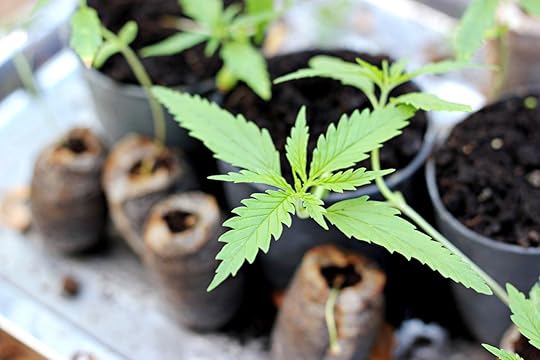
Photo: SURKED/Shutterstock
For all of the similarities between wine and cannabis — whether you’re talking about terroir-focused or blended — the plants are very different in how they’re grown. Therefore, the application of the concept of terroir must be different.
Cannabis is an annual plant. In nature, it sprouts in the spring, grows through the summer, flowers in the fall, and then dies. The same lifecycle happens through simulated environments at indoor grow operations.
Wine grapes, on the other hand, grow for decades. Vines that are 20, 30, 40 years old have embedded into the soil and become a defining characteristic of the land over time.
This difference in lifespan means that grapevines have the luxury of time to establish terroir whereas cannabis does not. Further complicating matters are the laws in many areas of recreational states that ban outdoor farms. Which elicits the question of whether something can express terroir without relying on the physical land — a component so central to the concept.
This question and others shape the debate for appellations for northern California cannabis. Gretchen Giles, who sat on the California Department of Food and Agriculture’s Appellations Working Group to help draft initial regulations in 2019, elaborated on why the debate over terroir in California cannabis is still ongoing.
“How do you express terroir if you’re not legally able to put plants in the ground outside?” she asked in an email. “Can hydroponic cultivation express terroir? If so, is that simply the flavor bestowed by the civic water source?”
Giles is a board member of the International Cannabis Farmers Association, and is working on answers to questions like these.
“Emerald Triangle farmers who grow in the ground and in the sun argue that theirs is the only method of cultivation that allows terroir to be truly expressed,” Giles says. “Some want to prohibit the use of water that doesn’t come from rain catchment or well. If you can’t grow that way because your Board of Supervisors won’t allow it, does that mean that you can’t have an appellation, that your area and cultivation methods don’t evoke terroir?”
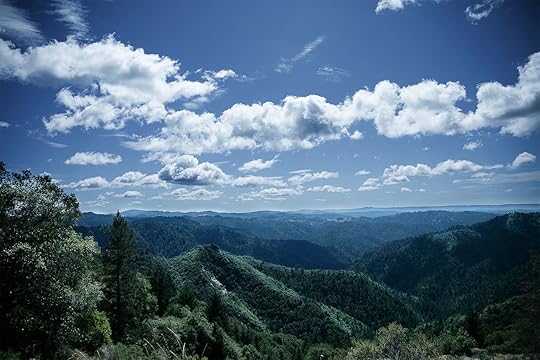
Photo: Sonder
Exclusivity is the point of appellations. It’s a statement that the product is made in one area according to a set of rules, which makes it different from the same product made anywhere else. Bellavia, from Lowell Herb Co., also notes that factors other than location are at play.
“Adding the appellation of origin would best describe the difference in cannabis from different regions,” Bellavia says. “More important than where it is grown is how it’s grown. Using organic compost teas as fertilizers, natural farming practices, and taking the time to cure the cannabis properly helps in giving a fuller taste profile.”
The matter of process

Photo: Sonder
For growers who want to show as much terroir in their cannabis as possible, how their product is processed and consumed matters almost as much as how it’s grown.
There are a few primary ways that cannabis is consumed: flower (the dried buds of the plant that are smoked in a pipe, joint, or bong), vape cartridges (e-cigarette attachments filled with a concentrated oil), and edibles. All of these ways, along with the myriad other methods, involve processing of some kind. Processing doesn’t mean losing terroir — wine is also processed from grapes — but it does have to be done correctly to let its characteristics shine.
“Flowers will be the best way to express terroir, as they have not been altered,” says
Erich Pearson, CEO of the cannabis company Sparc. “I expect that many concentrates that can be smelled by the consumer will too.”
Pearson also notes that it’s harder to show terroir through vapes. It’s possible, however, if the right steps are taken.
At Sonder, the focus is currently on small-batch, single-strain cartridges (though there are plans to expand into other product lines with the next harvest). Chapin and her team spent a lot of time prior to launch learning how to convey a sense of terroir through vape cartridges. This method, known as full spectrum, highlights all of the plant’s qualities. It’s a way to show terroir in the final product, as opposed to distillate cartridges that are processed into an oil solely composed of cannabinoids like THC or CBD.
“Distillate [cartridges] is like a shot of Everclear,” Chapin says. “Full spectrum is like a beautiful whiskey that’s peaty and full-flavored.” She later adds that many cannabis brands have “gone the route of chemistry” to try to showcase certain qualities. But “the flavinoids, terpenes, cannabinoids — all are necessary to get the full entourage. A distillate is just the THC molecule.”
The future of terroir in cannabis
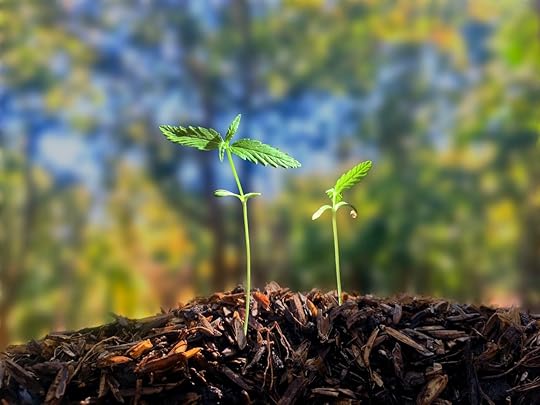
Photo: benze11/Shutterstock
As people in the United States grow increasingly comfortable and familiar with cannabis, producers will find better ways to communicate how their product is unique to the place it’s made. There will also be cannabis farms in destination regions, just like there are with destination vineyards — Sparc is working on a tourist-oriented farm in Sonoma County. There will also be more producers who make easily understood blends.
“There’s space for both,” says Johnson, of HUXTON. More consumers overall means more people who are looking for a consistent product across the board, as well as more people who are looking for the terroir-driven boutique experience. It’s just like how big wineries exist as well as boutique wineries, and how craft brewers exist as well as macro brewers.
“As the market matures, absolutely,” Chapin says when I asked her about whether there’s space for terroir-driven cannabis as well as more mass-market products. “Unfortunately, some of the smaller farms will get weeded out, but the ones that survive will thrive because the demand will always be there.” 

More like this: Everything to know before going to a state with recreational marijuana
The post Cannabis regions should get the same recognition as wine regions. Here’s why. appeared first on Matador Network.

Matador Network's Blog
- Matador Network's profile
- 6 followers



